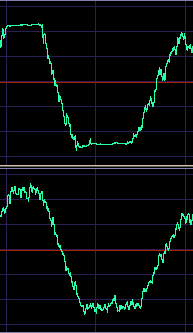Way back in 1978 the American audiophile record label Telarc made a recording that can be truly regarded as legendary. Using then-new digital recording technology (although in the absence of a digital consumer format, the original release was on LP), Telarc captured Tchaikovsky’s 1812 Overture, and for perhaps the first time the cannons were properly recorded.
On my CD version attention is drawn to this by:
WARNING! The cannons of the Telarc Digital “1812” are recorded at a very high level. Lower levels are recommended for initial playback until a safe level can be determined for your equipment.
They were impressive indeed. If you use rear-vented bass reflex speakers, expect any curtains or other materials behind the ports to punch back with the blasts. This recording was universally well-received, the only real complaints being the lack of a choir, and the fact that the orchestra had to be played at a lower than pleasing level in order to accommodate the cannon blasts at the end.

So how loud were these cannons? As it happens, one of the blasts produces a 38 hertz tone that considerably exceeds the maximum recording level of a CD! How can this be? After all, all PCM-based digital recordings have hard numerical limits. Analogue signals are mapped onto a 16 bit space. There can be no value greater than 32,767 or less than -32,768.
The way to go louder than ±215 in a 16 bit format is to do a bit of heavy clipping. The signal is wound up so loud that the tops and bottoms of the wave forms are chopped off. Hi-fi types are against clipping, of course, because it introduces rather high levels of harmonic distortion into the signal, making it sound harsh.
 But surely Telarc wouldn’t have clipped its signal. After all, it makes a point of avoiding signal processing as stated on the CD’s sleeve:
But surely Telarc wouldn’t have clipped its signal. After all, it makes a point of avoiding signal processing as stated on the CD’s sleeve:
During the recording of the digital masters and the subsequent transfer to disc, the signal was not passed through any processing device (i.e., compression, limiting, or equalization) at any step during production.
I have no reason to disbelieve Telarc. So given the limited technology available in 1978, it’s likely that the whole balancing thing was done by ear. That there was clipping, though, cannot be in doubt. The screen shot above shows the first two-tenths of a second of the right channel of the first cannon blast (digitally ripped from the CD, so there are no equipment limitations imposed on the result). It was only for reasons of keeping the graphic legible that I cut off the other four clipped peaks from this blast. The left channel is virtually identical. Nearly all the 16 cannon blasts show some clipped peaks.
There is reason to believe that the clipping occurred earlier in the chain than in laying down the recording on CD. The second cannon blast (see right), for example, shows clipping on a couple of the peaks even though these do not approach the CD limits. Indeed, the slope of the clipping (the sharp edges moving back slightly towards zero) tends to suggest that this is analogue, rather than digital, clipping. Perhaps at the microphone pre-amplifier stage. Capturing huge impulse signals is notoriously difficult. I once recorded a public fireworks display on DAT. Even though I was a couple of hundred metres from where the explosions were happening, I had to use the line input rather than the microphone input of the recorder to avoid clipping (later calculations suggested that there were instantaneous peaks of around 160dBSPL!)

Pingback: Hard Drive Wear While Playing Music